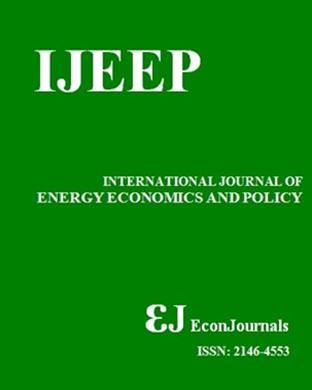The Disproportional Impact of Foreign Direct Investment, Carbon Dioxide Emissions and Economic Growth: Empirical Evidence from Vietnam
DOI:
https://doi.org/10.32479/ijeep.19633Keywords:
Foreign Direct Investment, Carbon Dioxide Emissions, Economic Growth, NARDL, VietnamAbstract
The study analyzes issues related to foreign direct investment flows into Vietnam, Vietnam’s CO2 emissions and their positive and negative impacts on the growth rate of the Vietnamese economy in the period from 1986 to 2023. This study not only provides empirical evidence on the relationship between environmental pollution, foreign direct investment and economic growth, but also uses the NARDL model to test the asymmetric impact of foreign investment flows on environmental pollution and economic growth in Vietnam. Specifically, the research results show that there is an asymmetric impact of foreign direct investment flows into Vietnam, CO2 emissions into the environment and the level of economic development. This capital flow includes both positive and negative impacts on long-term economic performance, reflecting changes in two different directions. When foreign direct investment flows increase by 1%, the economy tends to improve with an increase of 0.18%. On the contrary, when capital flows decrease by 1%, the economy is negatively affected with a decrease of 0.46% after a lag period. The results of this study are the basis for making recommendations for planning policies related to the environment, economic growth and attracting investment capital effectively.Downloads
Downloads
Published
2025-06-25
How to Cite
Le, V. D. H., & Le, T. T. H. (2025). The Disproportional Impact of Foreign Direct Investment, Carbon Dioxide Emissions and Economic Growth: Empirical Evidence from Vietnam. International Journal of Energy Economics and Policy, 15(4), 401–410. https://doi.org/10.32479/ijeep.19633
Issue
Section
Articles




